[FIX] This Video File Cannot Be Played Error Code 224003
The Error Code 224003 is encountered when users try to play a video on popular Web Browsers. This error usually occurs on JW Player which is the most popular embedded Media Player with 20 billion monthly streams. There could be different reasons why the video cannot be played by the browser therefore it is important to first diagnose the root cause of the problem.

Investigating into the issue we have found out there can be one of the following reasons for the Error Code 224003:
- Another process running on the web browser is blocking the video
- Your browser custom settings might be the cause of video being blocked
- You might have added a third-party Extension or Add-on on your browser
- Your Web Browser or the embedded Media Player is not up-to-date
- There can be a connectivity issue on your system
Before you proceed to the solution you need to make sure that your Web Browser is up-to-date, there is no connectivity issue on your system.
Turn Off your Add-ons and Extensions
It has been observed that certain kinds of Extensions and Add-ons particularly those that disable ads from being displayed in the browser can cause the video to be blocked. The main reason is that most sites these days rely on ads to continue providing free services to the users. These sites first perform a check to ensure that their ads are being displayed to the user. In case the ad is somehow blocked then the website does not allow the video to be played.
For Firefox:
- Click on the menu icon (three horizontal lines on the top-right corner) and click Add-ons
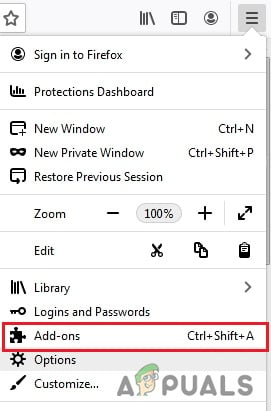
Click on the “Options” in the menu - Click on Extensions and next to the ad-blocker Extension click on the blue button to disable it
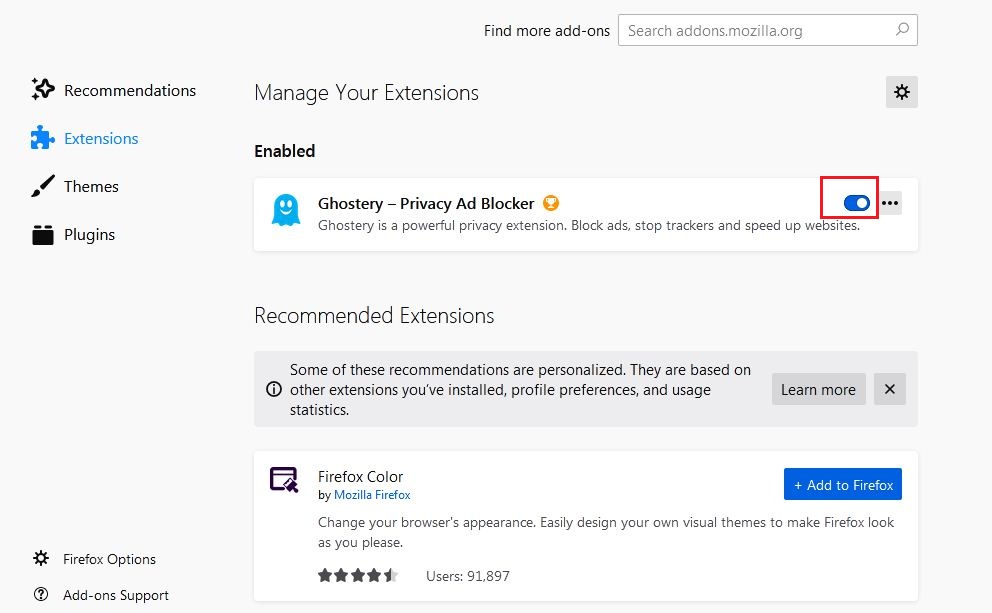
Click on the blue button to disable the Extension
For Chrome
- Click on the three dots on the top-right corner and select Tools and then click Extensions
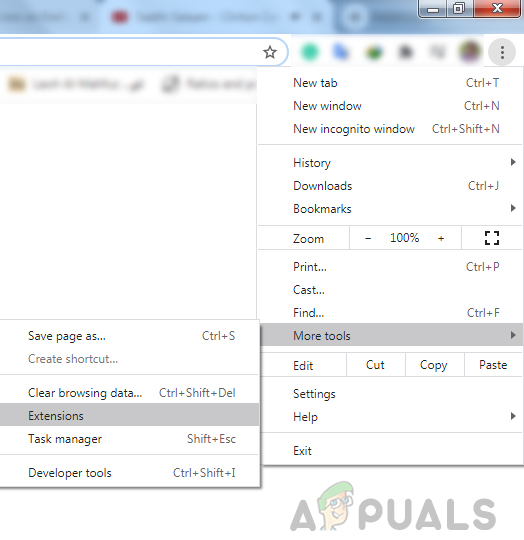
Click “More Tools” and then click “Extensions” - Now click on the blue button next to the Ad-blocker extension to disable it
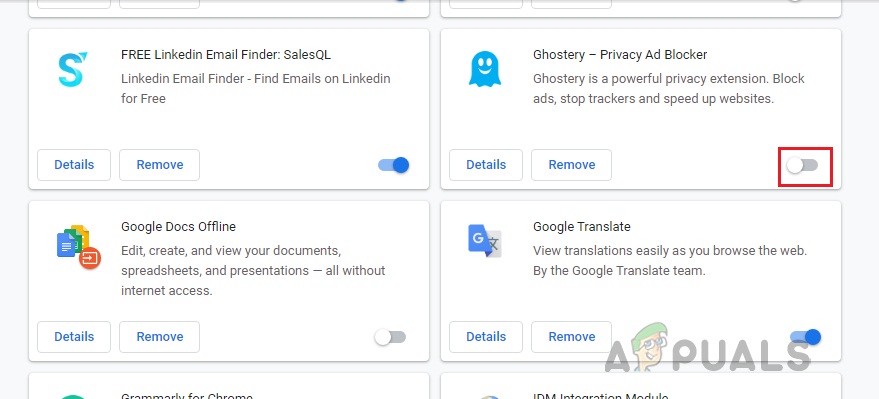
Turn Off Hardware Acceleration
Many browsers use hardware acceleration to improve the browser’s performance. Hardware acceleration allows your CPU to offload some page-rendering and loading tasks and assign them to your system’s GPU. But sometimes this feature can interfere with other tasks like video playback. Here, we will turn off the Hardware Acceleratio and see how it goes.
For Firefox:
- Click the menu button on the top-right corner and select Options
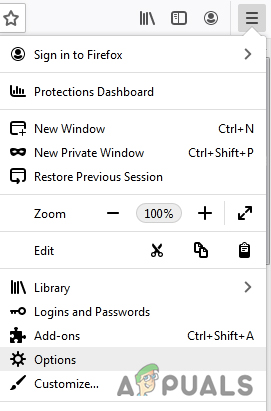
Select “Options” in the Menu - Select General panel and scroll down to Performance
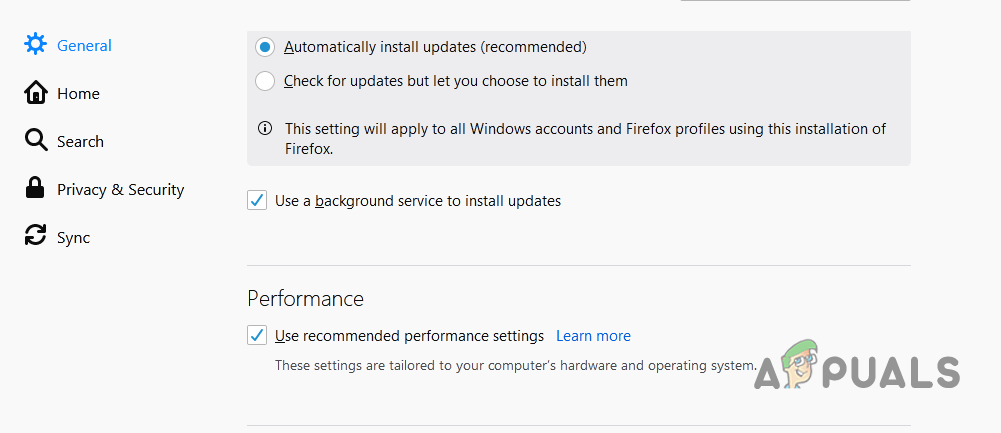
Select the “General” panel and scroll down to “Performance” - Uncheck ”Use recommended performance settings” and then uncheck “Use hardware acceleration when available”
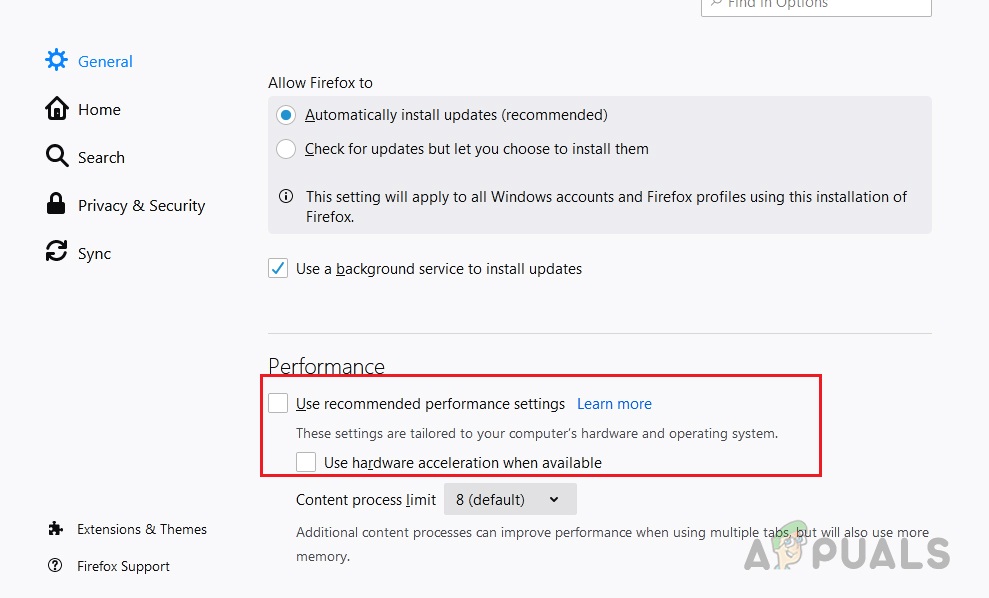
Uncheck “Use recommended performance settings” and “Use hardware acceleration when available”
For Chrome:
- Click on three dots icon on the top-right corner and click Settings
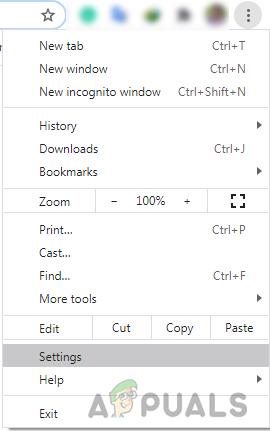
Select “Settings” in Chrome - Scroll down to the bottom and click Advanced and click on the blue switch icon where it says “Use hardware acceleration when available”
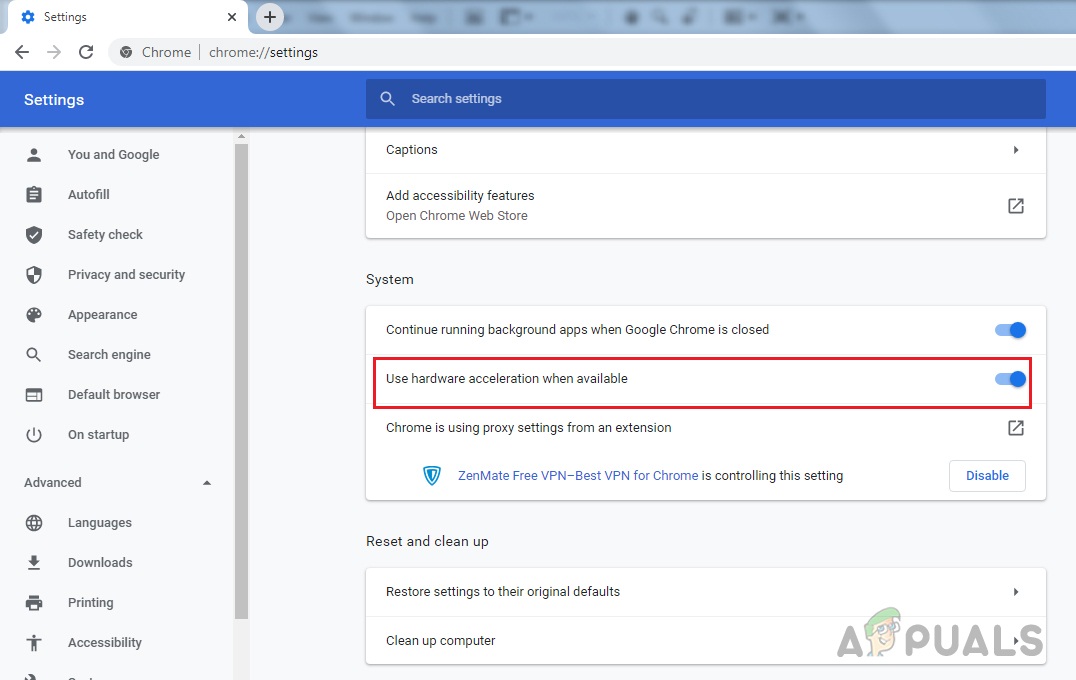
Click on the blue switch icon where it says “Use hardware acceleration when available”
Update the Browser to the Latest Build
A user may encounter the error code 224003 if the browser in use is outdated as its incompatibility with the website may not let the website load the required video codecs. In this case, updating the browser to the latest build may clear the error. For illustration, we will discuss the process of updating the Chrome browser on a PC.
- Launch the Chrome browser and click on the three vertical ellipses (in the top right of the window) to open the Chrome menu.
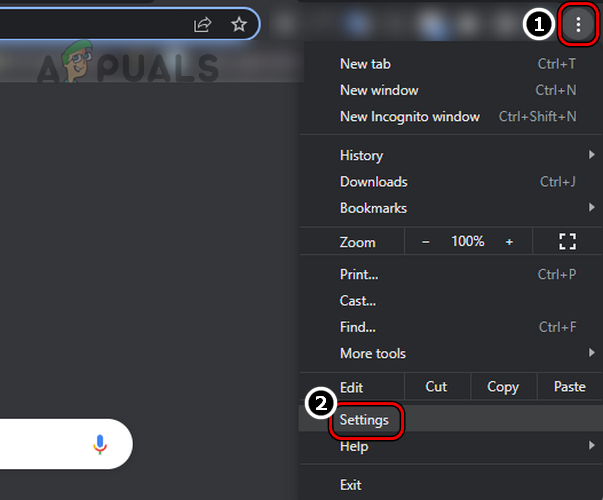
Open the Chrome Browser Settings - Now select Settings and in the left pane of the Settings window, head to the About Chrome tab.
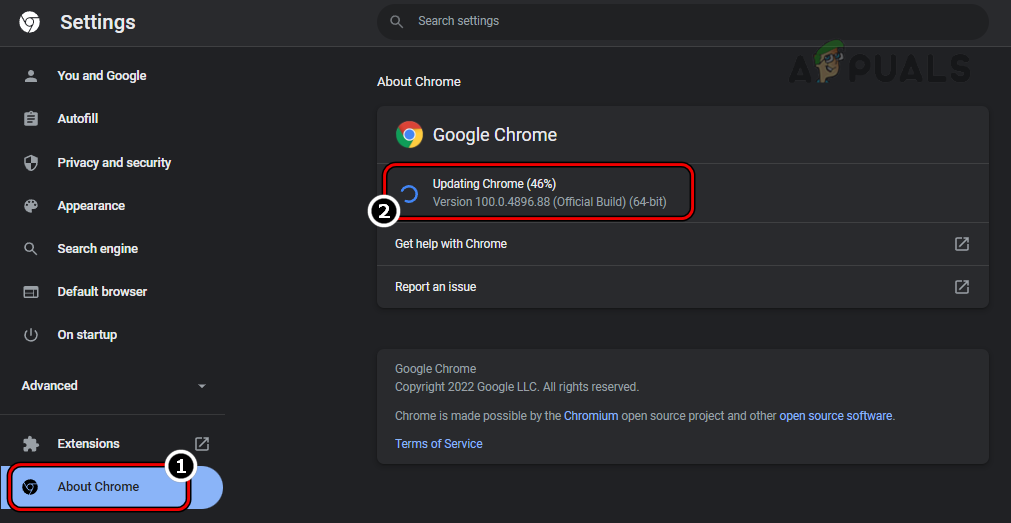
Update Chrome to the Latest Build - Then, in the right pane, make sure the Chrome browser is updated to its latest build, and then click on the Relaunch button.
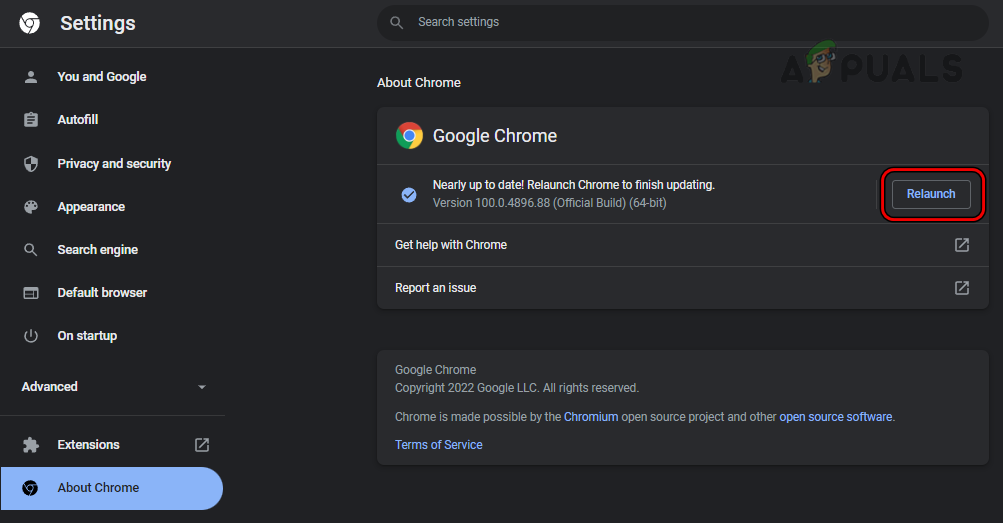
Relaunch Chrome After Updating it - Upon relaunch of Chrome, steer to the problematic website and check if it is operating fine without error 224003.
Enable History of the Browser
If the browser is configured to not save its history, then that may not let the problematic website fully authenticate a user’s credentials as the browser is not allowing the website to store its cookies on the client machine. In this context, enabling the history of the browser may resolve the issue. For elucidation, we will discuss the process for the Firefox browser.
- Launch the Firefox browser and click on the hamburger menu (3 vertical bars) in the top right to open the Firefox menu.
- Now select Settings and in the left pane of the Settings window, steer to the Privacy & Security tab.
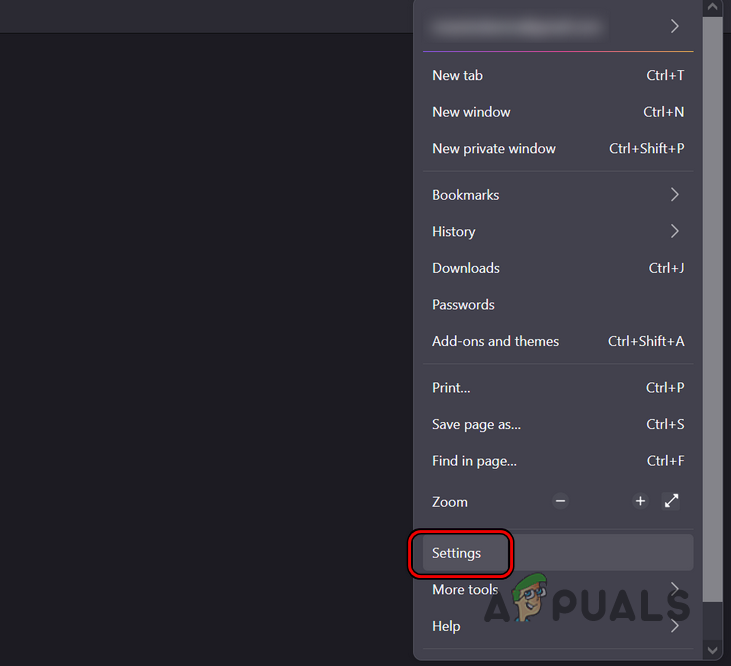
Open Firefox Settings - Then scroll down to the History section and afterward, set its dropdown to Remember History.
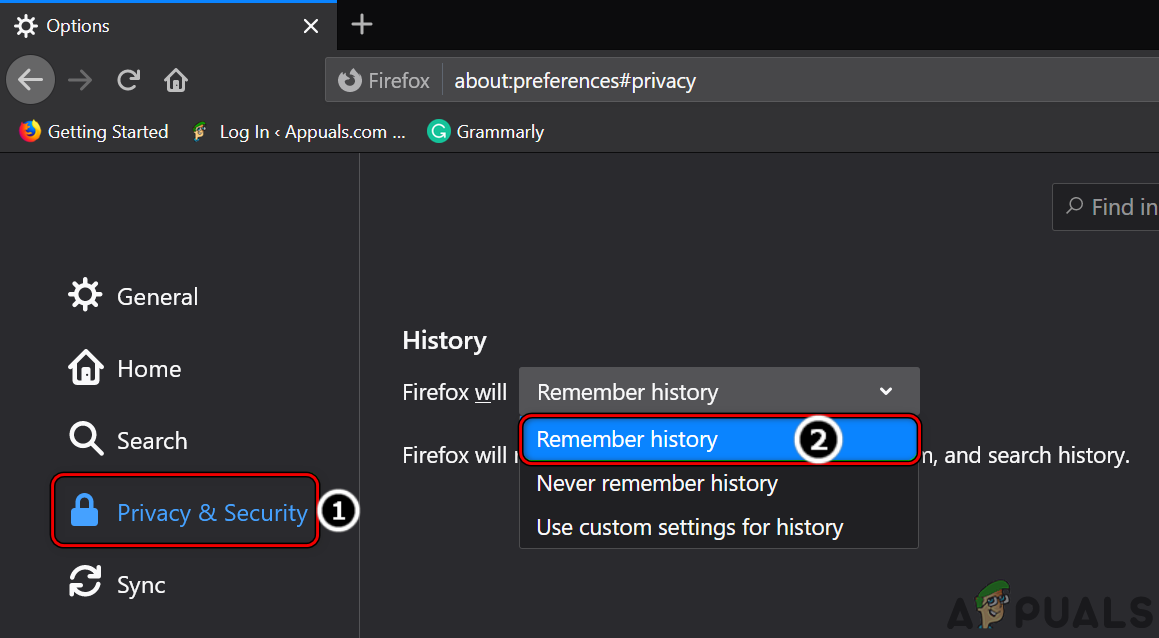
Enable Remember History in Firefox - Now, in the pop-up shown, click on Relaunch Firefox and upon relaunch of Firefox, check if the streaming error of the problematic website is cleared.
Clear the Browser’s Cookies and Cache
If the browser’s cookies or cache is corrupt, then that may result in the 224003 error as this corruption does not allow the website to properly authenticate the user’s credentials. In this case, clearing the browser’s cookies and cache may clear the error at hand. For illustration, we will discuss the process for the Chrome browser and Animeflix website. Before proceeding, make sure to note down essential info (like website logins, etc.) of the browser.
- Launch the Chrome browser and head to the Animeflix website.
- Now, in the browser’s address bar, click on the padlock icon and select Cookies.
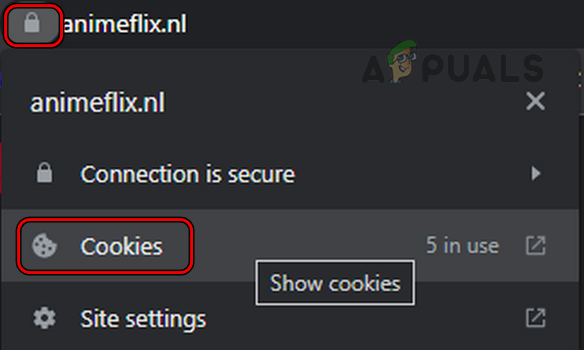
Open Animeflix Cookies from the Browser’s Address Bar - Then select a website cookie and click on Remove.
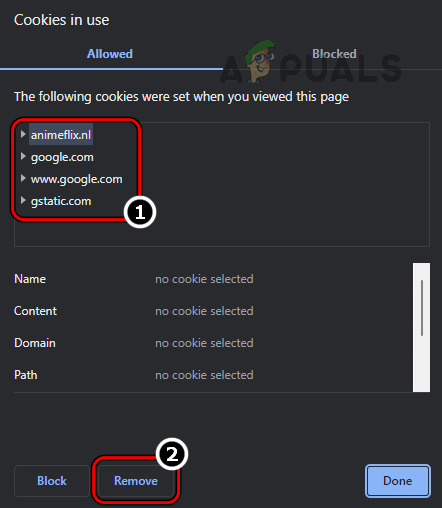
Remove the Animeflix Cookies - Now repeat the same to remove all the website cookies and then click on Done.
- Then relaunch the browser and check if the website can stream the problematic video without the error 224003.
- If not, open the Chrome menu and select More Tools>> Clear Browsing Data.
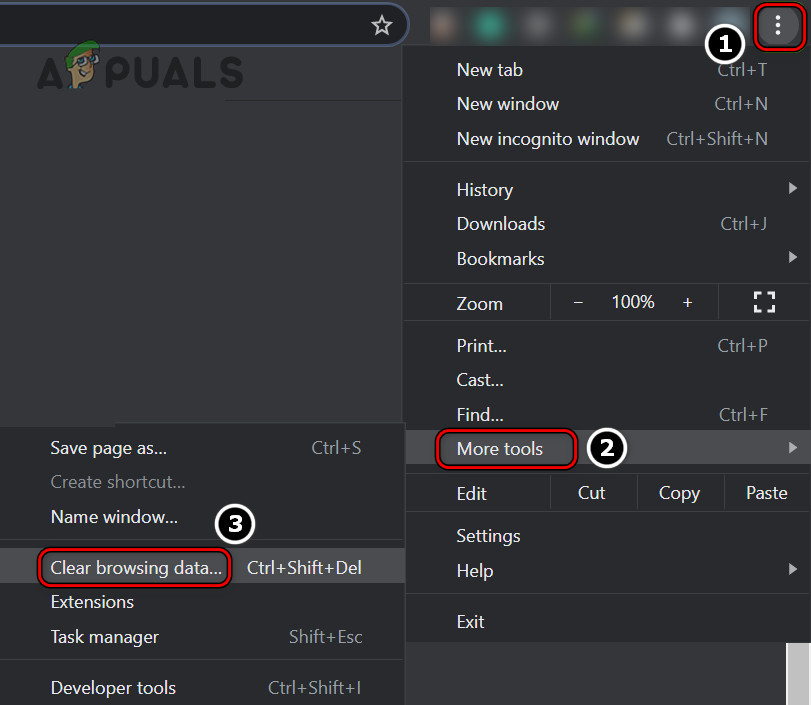
Open Clear Browsing Data in the Chrome Menu - Now, at the bottom of the window shown, click on Sign Out, and then, in the Advanced tab, select the Time-Range of All-Time.
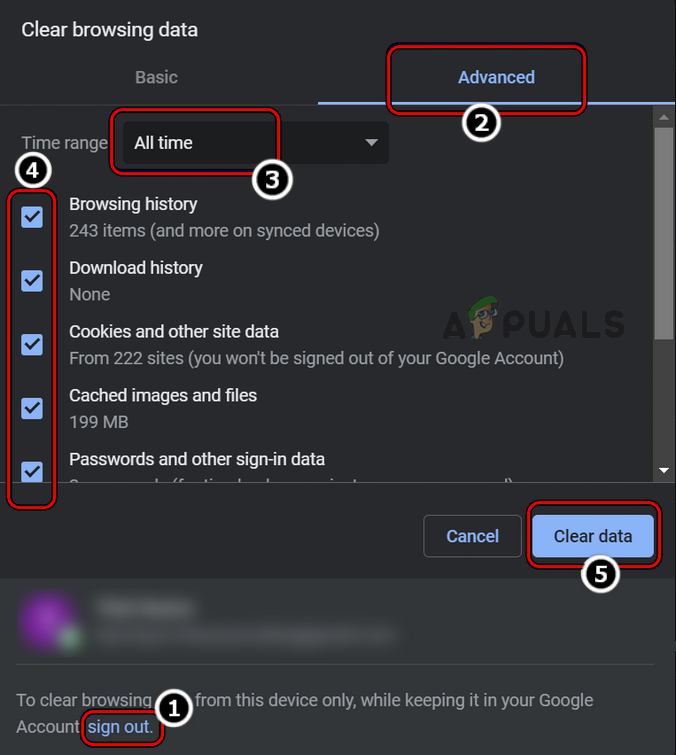
Clear Browsing Data of All Time in Chrome - Now, select all the categories by clicking on the relevant checkboxes and then click on the Clear Data button.
- Once done, restart the system, and upon restart, launch the Chrome browser.
- Now open the problematic website and check if it is streaming videos normally.
Try Another Browser
A website may show the error code 224003 when streaming a video if the browser in use is not compatible with the website and due to this incompatibility, the website fails to access the essential video codecs on the user’s system. In such a case, trying another browser to stream the video from the problematic website may resolve the issue.
- Download and install another browser on the system (if already not installed). If the issue is occurring with a Chromium-based browser like (Chrome or Edge), then use a non-Chromium browser (like Firefox) or vice versa.
- Now launch the newly installed browser and check if it can play the problematic video on the website.
Try a VPN or Use Another Network
If the ISP is hindering the traffic between the website and your device in a way that is making the website’s data packets un-parse-able on the server or client-side, then that may result in the error code 224003. Here, trying a VPN or using another network may clear the video file playing error.
- Download and install a VPN on the system or device.
- Now launch the VPN and connect to a remote location (like the USA).
- Then launch a web browser and open the problematic website to check it is clear of the file cannot be played error.
- If that fails, disconnect the system or device from VPN and current network.
- Now connect the device or system to another network (like a mobile phone’s hotspot) and check if that resolves the error code 224003.
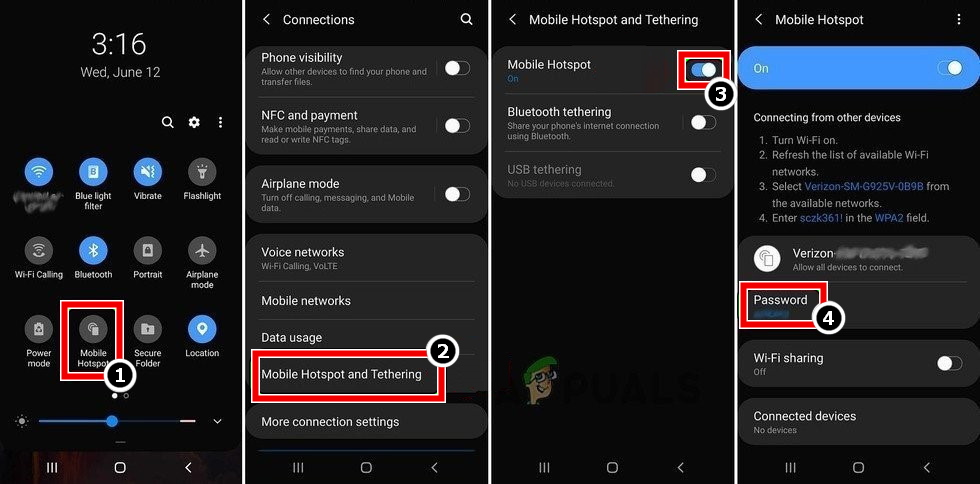
Enable Hotspot of Your Phone
Disable Private Address of iPhone
Apple has equipped its iPhone with a security feature in the form of the Private Address. This feature enables a user to save his private data on an unfamiliar or public Wi-Fi. This Private Address feature may not let a website stream the problematic video as it limits the website’s access to essential video codecs (“thinking” it is unsafe), which may result in the video file cannot be played error code 224003. In this case, disabling the Private Address in the iPhone Settings may clear the issue.
- Launch the iPhone Settings and tap on Wi-Fi.
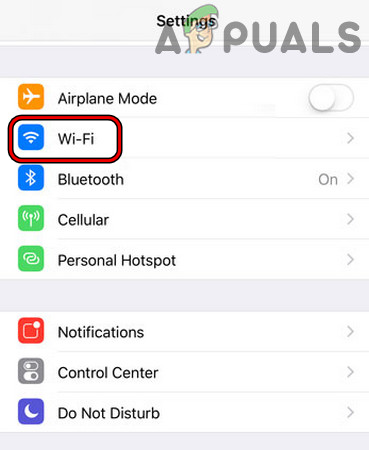
Open Wi-Fi in the iPhone Settings - Now select the connected Wi-Fi network and then disable Private Adress by toggling its switch to the off position.
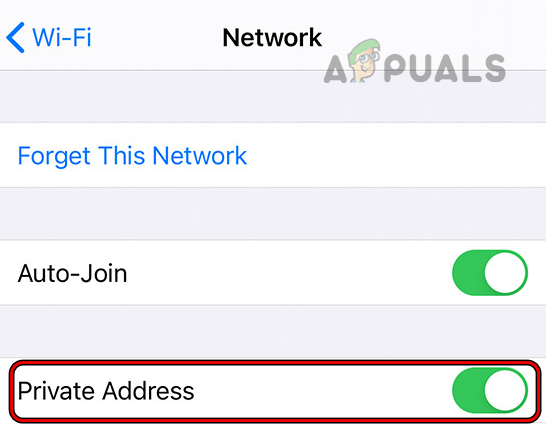
Disable Private Address of the Network in the iPhone Settings - Then restart the iPhone and upon restart, check if the device is clear of the error code 224003.
Disable the System or Network Firewall
If the system or network firewall is limiting the website traffic to the user’s system or device, then that may cause the file cannot be played error as the website fails to load its content on the user’s device. In this case, disabling the system or network firewall may clear the error code 224003. For illustration, we will discuss the process of disabling ESET Internet security (antivirus and firewall) on a Windows PC.
Warning:
Advance with utmost care and at your own risk as disabling the system or network firewall may expose the system, data, and network to threats.
- Expand the hidden icons of the system tray and right-click on the ESET Internet Security.
- Now select Disable Protection and if a UAC prompt is shown, click Yes.
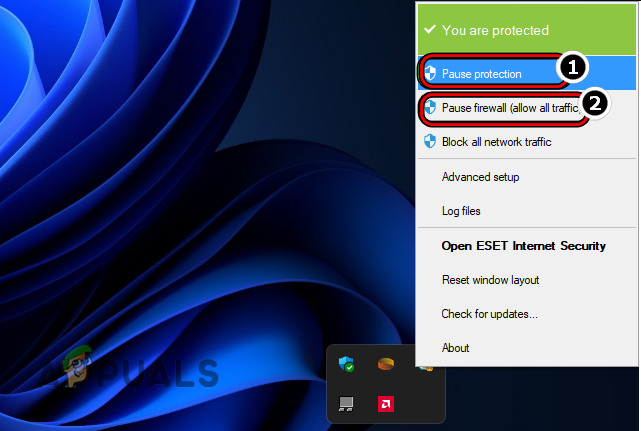
Pause ESET Protection and Firewall - Then select the period for which you want to disable the firewall (like 10 minutes) and again, right-click on ESET in the system tray.
- Now select Pause Firewall and then confirm to disable the ESET firewall.
- Once disabled, launch the browser and head to the problematic website to check if it is clear of the error. If so, then you may whitelist the problematic website in the system’s firewall.
- If the above did not do the trick, check if disabling the network firewall (like Pi-Hole or router’s firewall) resolves the video file error. If so, then make sure to exempt the problematic website in the network firewall settings.

Disable Router Firewall
Install Media Packs for Windows N
Windows N is a fully functional Windows variant that misses some of the media technologies. If the error code 224003 is occurring on a Windows system with Windows N as its operating system, then the missing media technologies on the system could be the root cause of the issue as the essential video codecs to stream the problematic video are missing. In this scenario, installing the Media Packs for Windows N may solve the problem. A user may use the official Microsoft documentation to install media packs for the particular Windows OS but for illustration, we will discuss the process for Windows 11 N version.
- Right-click Windows and open Settings.
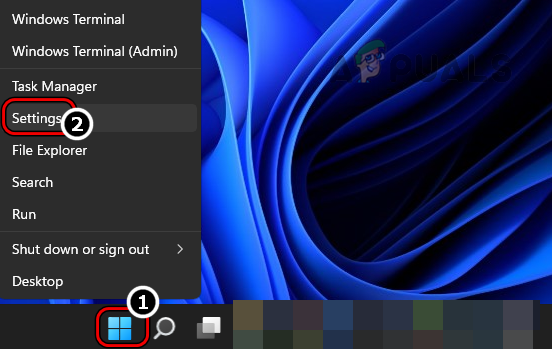
Open Windows Settings Through the Quick Access Menu - Now, in the left pane, head to the Apps tab, and in the right pane, open Optional Features.
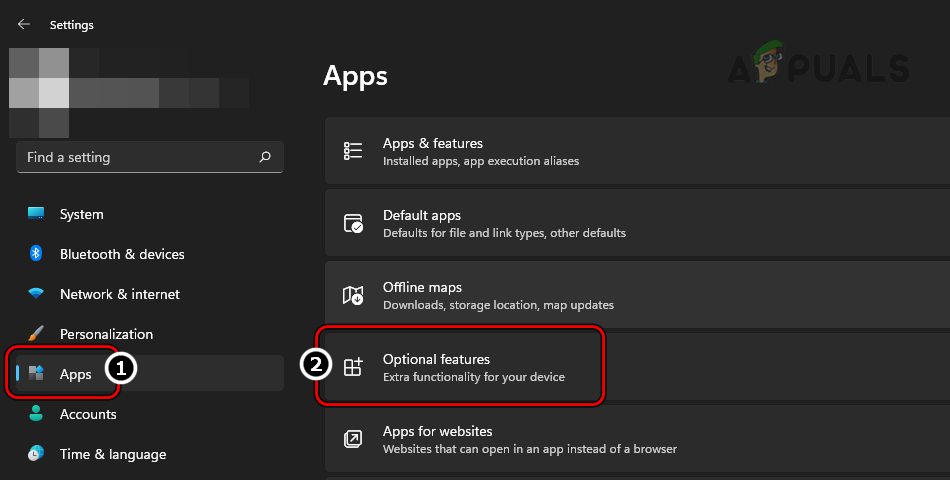
Open Optional Features in the Apps Tab of Windows Settings - Then click on View Features and scroll down to find the Media Feature Pack.
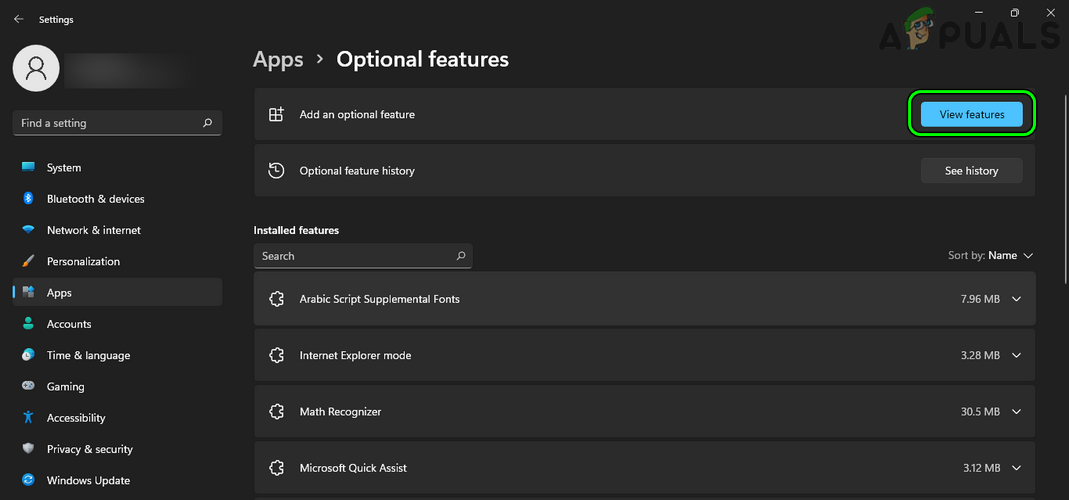
Open View Features in Optional Features - Now, checkmark the Media Feature Pack and click on Next.
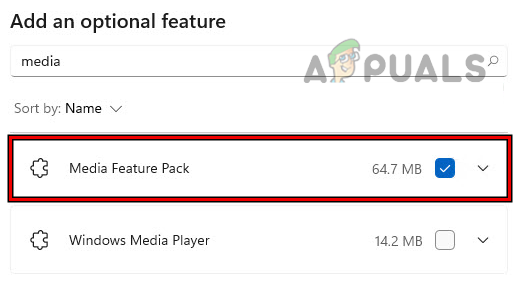
Add Media Feature Pack to Windows N - Then wait till the media pack is installed and once done, restart the system.
- Upon restart, launch a web browser and head to the problematic website.
- Now play the problematic video and hopefully, it will stream without error code 224003.
If none of the above worked, then a user may contact the support of the problematic website as the problem could be with the video stream of the website.





